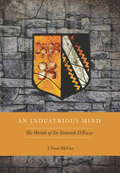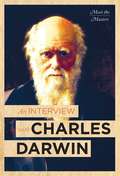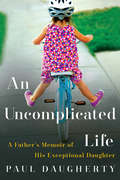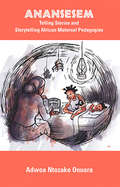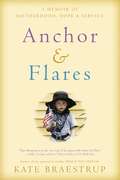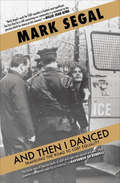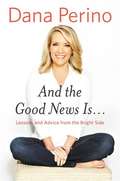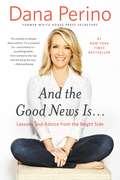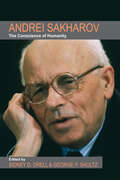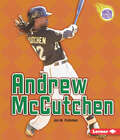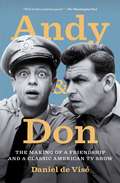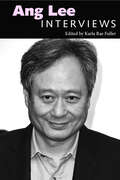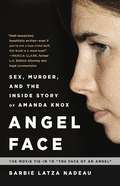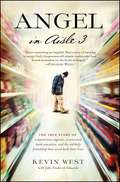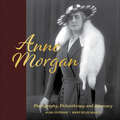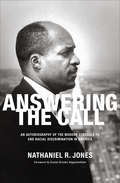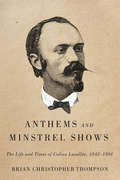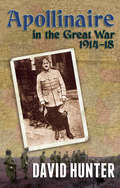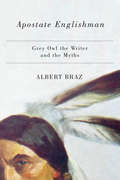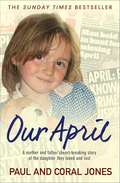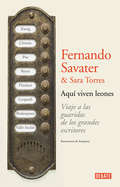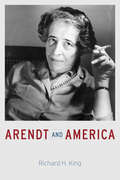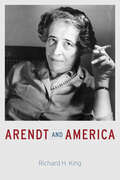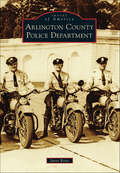- Table View
- List View
An Industrious Mind: The Worlds of Sir Simonds D'Ewes
by J. Sears McgeeThis is the first biography of Sir Simonds D'Ewes, a member of England's Long Parliament, Puritan, historian and antiquarian who lived from 1602-1650. D'Ewes took the Puritan side against the supporters of King Charles I in the English Civil War, and his extensive journal of the Long Parliament, together with his autobiography and correspondence, offer a uniquely comprehensive view of the life of a seventeenth-century English gentleman, his opinions, thoughts and prejudices during this tumultuous time. D'Ewes left the most extensive archive of personal papers of any individual in early modern Europe. His life and thought before the Long Parliament are carefully analyzed, so that the mind of one of the Parliamentarian opponents of King Charles I's policies can be understood more fully than that of any other Member of Parliament. Although conservative in social and political terms, D'Ewes's Puritanism prevented him from joining his Royalist younger brother Richard during the civil war that began in 1642. D'Ewes collected one of the largest private libraries of books and manuscripts in England in his era and used them to pursue historical and antiquarian research. He followed news of national and international events voraciously and conveyed his opinions of them to his friends in many hundreds of letters. McGee's biography is the first thorough exploration of the life and ideas of this extraordinary observer, offering fresh insight into this pivotal time in European history.
An Interview With Charles Darwin
by Peter J. BowlerCharles Darwin was a nineteenth century English naturalist responsible for several advancements in evolutionary theory. This is a biography for a young audience.
An Uncomplicated Life
by Paul DaughertyA father's exhilarating and inspiring love letter to his daughter with Down syndrome, whose vibrant and infectious approach can teach us all how to live a little better"Jillian was born October 17, 1989. It was the last bad day."Jillian Daugherty was born with Down syndrome. The day her parents, Paul and Kerry, brought her home from the hospital, they were flooded with worry and uncertainty, but also with overwhelming love, which they channeled to "the job of building the better Jillian." They knew their daughter had special needs, but they refused to have her grow up needy. They were resolved that Jillian's potential would not be limited by preconceptions of who she was or what she could be.In this charming and often heart-stirring book, Paul tells stories about Jillian making her way through the world of her backyard and neighborhood, going to school in a "normal" classroom, learning to play soccer and ride a bike. As she grows older, he traces her journey to find happiness and purpose in her adult life, including vignettes about her inspiring triumphs and the guardian angels--teachers, neighbors, friends--who believed in Jillian and helped her become the exceptional young woman she is today.In An Uncomplicated Life, the parent learns as much about life from the child as the child does from the parent. Being with Jillian, Paul discovered the importance of every moment and the power of the human spirit--how we are each put here to benefit the other. Through her unmitigated love for others, her sparkling charisma, and her boundless capacity for joy, Jillian has inspired those around her to live better and more fully. As Paul writes, "Jillian is a soul map of our best intentions," a model of grace, happiness, and infectious enthusiasm. She embraces all that she is, all that she has--"I love my life. I just love my life," she says. In her uncomplicated life, we see the possibility, the hope, and the beauty of our own.
Anansesem: Telling Stories And Storytelling African Maternal Pedagogies
by Ntozake Adwoa OnuoraAnansesem: Telling Stories and Storytelling African Maternal Pedagogies is a composite story on African Canadian mothers' experiences of teaching and learning while mothering. It seeks to celebrate the African mother's everyday experiences and honor her embodied and cultural knowledge as important sites of meaning making and discovery for the African child. Through the Afro-indigenous art of Anansi storytelling, memoir, creative non-fiction and illustrations, the author takes you on an evocative narrative journey that focuses on how African descended women draw upon and are central to African childrens' cultural, social and identity development. In entering these stories, readers access their joys, sadness, strengths and weaknesses as they mother in the midst of marginalization. The book is a testament to the power of counter-storytelling for inspiring internal and external transformation.
Anchor and Flares: A Memoir of Motherhood, Hope, and Service
by Kate BraestrupKate Braestrup's life was transformed by the loss of her husband; now Kate faces the possibility that she may lose her son.As a young mother Kate Braestrup discovered the fierce protectiveness that accompanies parenthood. In the intervening years--through mourning her husband and the joy of remarriage and a blended family-Kate has absorbed the rewards and complications of that spirit. But when her eldest son joins the Marines, Kate is at a crossroads: Can she reconcile her desire to protect her children with her family's legacy of service? Can parents balance the joy of a child's independence with the fear of letting go? As Kate examines the twinned emotions of faith and fear-inspired by the families she meets as a chaplain and by her son's journey towards purpose and familyhood-she learns that the threats we can't predict will rip us apart and knit us together.
And Then I Danced: Traveling the Road to LGBT Equality
by Mark SegalA gay-rights pioneer shares his stories, from Stonewall to dancing with his husband at the White House, in a memoir full of &“funny anecdotes and heart&” (Publishers Weekly).On December 11, 1973, Mark Segal disrupted a live broadcast of the CBS Evening News when he sat on the desk directly between the camera and news anchor Walter Cronkite, yelling, &“Gays protest CBS prejudice!&” He was wrestled to the studio floor by the stagehands on live national television, thus ending LGBT invisibility. But this one victory left many more battles to fight, and creativity was required to find a way to challenge stereotypes. Mark Segal's job, as he saw it, was to show the nation who gay people are: our sons, daughters, fathers, and mothers.This is a memoir of one man&’s role in modern LGBT history, from being on the scene of the Stonewall riots, to getting kicked off a 1970s TV show for dancing with another man—and then, decades later, dancing with his husband at a White House event for Gay Pride.&“[Segal] vividly describes his firsthand experience as a teenager inside the Stonewall bar during the historic riots, his participation with the Gay Liberation Front, and amusing encounters with Elton John and Patti LaBelle....A jovial yet passionately delivered self-portrait inspiring awareness about LGBT history from one of the movement's true pioneers.&”—Kirkus Reviews&“The stories are interesting, unexpected, and witty.&”—Library Journal &“Much this book focuses on his work, but the more telling pages are filled with love gained and lost, raising other people&’s children, finding himself, and aging in the gay community. A must-read.&”—The Advocate
And the Good News Is... Lessons and Advice from the Bright Side
by Dana Perino#1 New York Times Bestseller<P> #1 Wall Street Journal Bestseller<P> From her years as the presidential press secretary to her debates with colleagues on Fox News' The Five, Dana Perino reveals the lessons she's learned that have guided her through life, kept her level-headed, and led to her success, even in the face of adversity. <P> Thoughtful, inspiring, and often surprising, AND THE GOOD NEWS IS . . . traces Dana Perino's unlikely journey through politics and television. It's a remarkable American story-made up of equal parts determination and clear-eyed optimism. <P> From facing professional challenges and confronting personal fears to stepping up to a podium for a President, Dana has come to expect the unexpected and has an uncanny ability to find the good news in any tough situation. AND THE GOOD NEWS IS . . . takes us from her Western childhood in Wyoming and Colorado to a chance meeting on an airplane that changes her life entirely. Then, with refreshing honesty and humor, she recounts her frustration with a string of unsatisfying jobs and living circumstances until a key career tip leads her back to Washington, D.C. to work for the Bush Administration.<P> Dana also shares here her best work and life lessons-tips that will help you to get your point across convincingly while allowing your own grace and personality to shine through. As someone who still believes in working together to solve the problems our nation faces, Dana offers clear, practical advice on how to restore civility to our personal and public conversations. The result is a fascinating read that can help anyone become more successful, productive, and joyously content.
And the Good News Is...: Lessons and Advice from the Bright Side
by Dana Perino#1 New York Times Bestseller#1 Wall Street Journal Bestseller From her years as the presidential press secretary to her debates with colleagues on Fox News' The Five, Dana Perino reveals the lessons she's learned that have guided her through life, kept her level-headed, and led to her success, even in the face of adversity. Thoughtful, inspiring, and often surprising, AND THE GOOD NEWS IS . . . traces Dana Perino's unlikely journey through politics and television. It's a remarkable American story-made up of equal parts determination and clear-eyed optimism. From facing professional challenges and confronting personal fears to stepping up to a podium for a President, Dana has come to expect the unexpected and has an uncanny ability to find the good news in any tough situation. AND THE GOOD NEWS IS . . . takes us from her Western childhood in Wyoming and Colorado to a chance meeting on an airplane that changes her life entirely. Then, with refreshing honesty and humor, she recounts her frustration with a string of unsatisfying jobs and living circumstances until a key career tip leads her back to Washington, D.C. to work for the Bush Administration. Dana also shares here her best work and life lessons-tips that will help you to get your point across convincingly while allowing your own grace and personality to shine through. As someone who still believes in working together to solve the problems our nation faces, Dana offers clear, practical advice on how to restore civility to our personal and public conversations. The result is a fascinating read that can help anyone become more successful, productive, and joyously content.
Andrei Sakharov: The Conscience of Humanity
by Sidney D. Drell and George P. ShultzAndrei Sakharov holds an honored place in the pantheon of the world's greatest scientists, reformers, and champions of human rights. But his embrace of human rights did not come through a sudden conversion; he came to it in stages. Drawing from a 2014 Hoover Institution conference focused on Sakharov's life and principles, this book tells the compelling story of his metamorphosis from a distinguished physical scientist into a courageous, outspoken dissident humanitarian voice.His extraordinary life saw him go from playing the leading role in designing and building the most powerful thermonuclear weapon (the so-called hydrogen bomb) ever exploded to demanding an end to the testing of such weapons and their eventual elimination. The essays detail his transformation, as he appealed first to his scientific colleagues abroad and then to mankind at large, for solidarity in resolving the growing threats to human survival—many of which stemmed from science and technology. Ultimately, the distinguished contributors show how the work and thinking of this eminent Russian nuclear physicist and courageous human rights campaigner can help find solutions to the nuclear threats of today.
Andrew McCutchen (Amazing Athletes Ser.)
by Jon M FishmanPittsburgh Pirates star center fielder Andrew McCutchen didn't have much growing up. But he did have big dreams about playing for a Major League Baseball (MLB) team. In 2005, those dreams came true when the Pirates chose Andrew with the 11th pick in the MLB draft. The Pirates were a bad team. They hadn't been to the playoffs since 1992. Andrew helped change all that. In 2013, he led the Pirates to the playoffs, and he was named National League Most Valuable Player in the process.
Andy and Don: The Making of a Friendship and a Classic American
by Daniel De ViséA lively and revealing biography of Andy Griffith and Don Knotts, celebrating the powerful real-life friendship behind one of America's most iconic television programs.Andy Griffith and Don Knotts met on Broadway in the 1950s. When Andy went to Hollywood to film a TV pilot about a small-town sheriff, Don called to ask if the sheriff could use a deputy. The comedic synergy between Sheriff Andy Taylor and Deputy Barney Fife ignited The Andy Griffith Show, elevating a folksy sitcom into a timeless study of human friendship, as potent off the screen as on. Andy and Don--fellow Southerners born into poverty and raised among scofflaws, bullies, and drunks--captured the hearts of Americans across the country as they rocked lazily on the front porch, meditating about the simple pleasure of a bottle of pop. But behind this sleepy, small-town charm, de Visé's exclusive reporting reveals explosions of violent temper, bouts of crippling neurosis, and all-too-human struggles with the temptations of fame. Andy and Don chronicles unspoken rivalries, passionate affairs, unrequited loves, and friendships lost and regained. Although Andy and Don ended their Mayberry partnership in 1965, they remained best friends for the next half-century, with Andy visiting Don at his death bed. Written by Don Knotts's brother-in-law and featuring extensive unpublished interviews with those closest to both men, Andy and Don is the definitive literary work on the legacy of The Andy Griffith Show and a provocative and an entertaining read about two of America's most enduring stars.
Ang Lee: Interviews (Conversations with Filmmakers Series)
by Karla Rae FullerTaiwanese born, Ang Lee (b. 1954) has produced diverse films in his award-winning body of work. Sometimes working in the West, sometimes in the East, he creates films that defy easy categorization and continue to amaze audiences worldwide. Lee has won an Academy Award two times for Best Director--the first Asian to win--for films as different as a small drama about gay cowboys in Brokeback Mountain (2005), and the 3D technical wizardry in Life of Pi (2012). He has garnered numerous accolades and awards worldwide.Lee has made a broad range of movies, including his so-called "Father Knows Best" trilogy made up of his first three films: Pushing Hands (1992), The Wedding Banquet (1993), and Eat Drink Man Woman (1994), as well as 1970s period drama The Ice Storm (1997), martial arts film Crouching Tiger, Hidden Dragon (2000), superhero blockbuster Hulk (2003), and hippie retro trip Taking Woodstock (2009).Thoughtful and passionate, Lee humbly reveals here a personal journey that brought him from Taiwan to his chosen home in the United States as he struggled and ultimately triumphed in his quest to become a superb filmmaker. Ang Lee: Interviews collects the best interviews of this reticent yet bold figure.
Angel Face: Sex, Murder, and the Inside Story of Amanda Knox [The movie tie-in to The Face of an Angel]
by PerseusDespite all the airtime devoted to Amanda Knox, it's still hard to reconcile the fresh-faced honor student from Seattle with the sexually rapacious killer convicted of the November 2007 murder of her British roommate. Few Americans have heard all of the powerful evidence that convinced a jury that Knox was one of three people to sexually assault Meredith Kercher, brutalize her body, and cut her throat. In Angel Face, Rome-based Daily Beast senior writer Barbie Latza Nadeau - who cultivated personal relationships with the key figures in both the prosecution and the defense - describes how the Knox family's heavy-handed efforts to control media coverage distorted the facts, inflamed an American audience, and painted an offensive, inaccurate picture of Italy's justice system. An eye-opener for any parent considering sending a child away to study, Angel Face reveals what really went on in this incomprehensible crime.
Angel in Aisle 3
by Kevin West Frederick EdwardsIn the tradition of An Invisible Thread and Same Kind of Different as Me, Angel in Aisle 3 is the heartwarming true story of an unlikely friendship that began with a chance meeting in a grocery store between a bank executive bound for prison and an elderly stranger.When Kevin West resigned from his job as vice president of a bank in 1998 after making fraudulent loans, he spent the time before his trial managing a family-owned, small grocery store in Ironton, Ohio. Dealing with serious marriage problems and with a prison sentence almost certainly in his future, Kevin was overcome with remorse and without a scrap of hope. It was at his lowest moment that Kevin called out to a power beyond himself for help, and God answered his prayer in the form of an elderly vagrant in a soiled shirt and tattered pants named Don. When Don saw Kevin's open Bible on the counter next to the register, the untidy, long-haired indigent took the opportunity to share Bible wisdom and life-giving truths that changed Kevin's life. Finding a sense of peace in their conversation, Kevin offered Don a few basic groceries and an invitation to continue their conversation the next day. What began as a chance meeting between two individuals whose lives seemed headed for certain ruin, turns into an unlikely bond of friendship that saved them both. It was this friendship that helped Kevin thrive in prison, restore his failed marriage, and gave Don a chance at a new life that went beyond anyone's imagination. Moving and awe-inspiring, this story of a pure friendship sheds light on the redemption and hope that can grow out of relationships based in faith.
Anne Morgan: Photography, Philanthropy, and Advocacy
by Alan Govenar Mary Niles MackAn inspiring story of an extraordinary woman (the youngest daughter of J. P. Morgan) and her commitment to photography, philanthropy, and advocacyBiographical essays detail Morgan's life and work as well as her use of the photographic image in her philanthropic effortsIncludes a facsimile of The American Girl, Morgan's social critique and veiled autobiography published in 1916
Answering the Call: An Autobiography of the Modern Struggle to End Racial Discrimination in America
by Nathaniel R. Jones&“Jones, a trailblazing African American judge, delivers an urgently needed perspective on American history . . . [A] passionate and informative account&” (Booklist, starred review). Answering the Call is an extraordinary eyewitness account from an unsung hero of the battle for racial equality in America—a battle that, far from ending with the great victories of the civil rights era, saw some of its signal achievements in the desegregation fights of the 1970s and its most notable setbacks in the affirmative action debates that continue into the present in Ferguson, Baltimore, and beyond. Judge Nathaniel R. Jones&’s groundbreaking career was forged in the 1960s: As the first African American assistant US attorney in Ohio; as assistant general counsel of the Kerner Commission; and, beginning in 1969, as general counsel of the NAACP. In that latter role, Jones coordinated attacks against Northern school segregation—a vital, divisive, and poorly understood chapter in the movement for equality—twice arguing in the pivotal US Supreme Court case Bradley v. Milliken, which addressed school desegregation in Detroit. He also led the national response to the attacks against affirmative action, spearheading and arguing many of the signal legal cases of that effort. Answering the Call is &“a stunning, inside story of the contemporary struggle for civil rights . . . Essential reading for understanding where we are today—underscoring just how much work is left to be done&” (Vernon E. Jordan Jr., civil rights activist). &“A forthright testimony by a witness to history.&” —Kirkus Reviews
Anthems and Minstrel Shows
by Brian Christopher ThompsonCalixa Lavallée, the composer of "O Canada," was the first Canadian-born musician to achieve an international reputation. While primarily remembered for the national anthem, Lavallée and his work extended well beyond Canada, and he played a multitude of roles in North American music as a composer, conductor, administrator, instrumentalist, educator, and critic. In Anthems and Minstrel Shows, Brian Thompson analyzes Lavallée's music, letters, and published writings, as well as newspapers and music magazines of the time, to provide a detailed account of musical life in nineteenth-century North America and the relationship between music and nation. Leaving Quebec at age sixteen, Lavallée travelled widely for a decade as musical director of a minstrel troupe, and spent a year as a bandsman in the Union Army. Later, as a performer and conductor, he built a repertoire that prepared audiences for the intellectually challenging music of European composers and new music by his US contemporaries. His own music extended from national songs to comic operas, and instrumental music, as he shifted between the worlds of classical and popular music. Previously portrayed as a humble French Canadian forced into exile by ignorance and injustice, Lavallée emerges here as ambitious, radical, bohemian, and fully engaged with the musical, social, and political currents of his time. While nationalism and nation-building are central to this story, Anthems and Minstrel Shows asks to which nation - or nations - Lavallée and "O Canada" really belong.
Anthems and Minstrel Shows: The Life and Times of Calixa Lavallée, 1842-1891
by Brian Christopher ThompsonCalixa Lavallée, the composer of “O Canada,” was the first Canadian-born musician to achieve an international reputation. While primarily remembered for the national anthem, Lavallée and his work extended well beyond Canada, and he played a multitude of roles in North American music as a composer, conductor, administrator, instrumentalist, educator, and critic. In Anthems and Minstrel Shows, Brian Thompson analyzes Lavallée’s music, letters, and published writings, as well as newspapers and music magazines of the time, to provide a detailed account of musical life in nineteenth-century North America and the relationship between music and nation. Leaving Quebec at age sixteen, Lavallée travelled widely for a decade as musical director of a minstrel troupe, and spent a year as a bandsman in the Union Army. Later, as a performer and conductor, he built a repertoire that prepared audiences for the intellectually challenging music of European composers and new music by his US contemporaries. His own music extended from national songs to comic operas, and instrumental music, as he shifted between the worlds of classical and popular music. Previously portrayed as a humble French Canadian forced into exile by ignorance and injustice, Lavallée emerges here as ambitious, radical, bohemian, and fully engaged with the musical, social, and political currents of his time. While nationalism and nation-building are central to this story, Anthems and Minstrel Shows asks to which nation – or nations – Lavallée and “O Canada” really belong.
Apollinaire in the Great War (1914-18)
by David HunterA major literary figure in pre-war Paris, Guillaume Apollinaire volunteered for war in 1914, trained as an artilleryman and was posted in April 1915 to the Champagne front in northern France, participating in the bloody but little-known offensive that September and then moving into the front line as an infantry officer, before being wounded in March 1916 and invalided out of active service. Back in Paris, Apollinaire plunged back into the activities of the capital's artistic avant-garde, meanwhile publishing poetry, prose and plays that were deeply influenced by his involvement in the conflict. He died on 9 November 1918, two days before the Armistice, a victim of the influenza pandemic, but with a literary reputation secured, as well as a certain fame for coining the term 'Surrealism'. This book draws heavily on Apollinaire's writings to tell the story of his war years, within the wider context of the French experience of the Great War. In this period, Apollinaire also wrote hundreds of letters, the bulk of them to two women: Louise de Coligny, a flighty socialite of aristocratic origin, and Madeleine Pagès, a young schoolteacher. In these letters he poured out his passionate feelings for both in often highly erotic poetry and prose, as well as giving detailed descriptions of his life as a front-line soldier.
Apostate Englishman: Grey Owl the Writer and the Myths
by Albert BrazIn the 1930s Grey Owl was considered the foremost conservationist and nature writer in the world. He owed his fame largely to his four internationally bestselling books, which he supported with a series of extremely popular illustrated lectures across North America and Great Britain. His reputation was transformed radically, however, after he died in April 1938, and it was revealed that he was not of mixed Scottish-Apache ancestry, as he had often claimed, but in fact an Englishman named Archie Belaney. Born into a privileged family in the dominant culture of his time, what compelled him to flee to a far less powerful one? Albert Braz’s Apostate Englishman: Grey Owl the Writer and the Myths is the first comprehensive study of Grey Owl’s cultural and political image in light of his own writings. While the denunciations of Grey Owl after his death are often interpreted as a rejection of his appropriation of another culture, Braz argues that what troubled many people was not only that Grey Owl deceived them about his identity, but also that he had forsaken European culture for the North American Indigenous way of life. That is, he committed cultural apostasy.
April
by Paul JonesIn October 2012, the nation was gripped by the tragic story of five-year-old April Jones, whose disappearance from the tiny Welsh village of Machynllech sparked the biggest police search in UK history. Her body was never fully recovered but paedophile Mark Bridger was convicted of her murder and abduction following a month-long trial in May 2013. In this gripping and harrowing book, April's heartbroken parents Coral and Paul speak at length about their beloved daughter and the search for her, their ordeal as they faced Bridger in court every day during the trial, and their ongoing fight against the vile child pornography he viewed in the days leading up to April's abduction. They remember with enduring love the daughter who fought so bravely to survive premature birth and mild disability, and who was enchanted by all the things a little girl finds magical. Paul Jones kept a diary throughout the ordeal, the contents of which are revealed for the first time in this searingly honest account of unimaginable emotional pain. Alongside books such as Madeleine by Kate McCann and Goodbye Dearest Holly by Kevin Wells, April will stand as a poignant reminder of what it means to lose the thing you most love.
Aquí viven leones
by Fernando Savater Sara TorresUn delicioso recorrido por la obra y los lugares más emblemáticos de ocho escritores fundamentales. El regreso de Savater a su faceta más divulgativa. En Aquí viven leones, Fernando Savater vuelve a una de sus facetas favoritas, la de divulgador de la literatura y el pensamiento. A través de ocho viajes inolvidables, ilustrados magníficamente por Anapurna, nos presenta la obra y la vida de Shakespeare, Valle Inclán, Poe, Leopardi, Agatha Christie, Reyes, Flaubert y Zweig. Son ocho extraordinarias introducciones a sendos autores clave de la literatura universal de muy distintos registros. Un libro maravilloso para entrar en el mundo de estos escritores, conocer su obra y disponer de más claves para poder disfrutarla. Reseña:«Un libro hermoso y bien ilustrado en todos los sentidos.»Luis M. Alonso, La Opinión de A Coruña
Arendt and America
by Richard H. KingGerman-Jewish political philosopher Hannah Arendt (1906-75) fled from the Nazis to New York in 1941, and during the next thirty years in America she wrote her best-known and most influential works, such as The Human Condition, The Origins of Totalitarianism, and On Revolution. Yet, despite the fact that a substantial portion of her oeuvre was written in America, not Europe, no one has directly considered the influence of America on her thought--until now. In Arendt and America, historian Richard H. King argues that while all of Arendt's work was haunted by her experience of totalitarianism, it was only in her adopted homeland that she was able to formulate the idea of the modern republic as an alternative to totalitarian rule. Situating Arendt within the context of U. S. intellectual, political, and social history, King reveals how Arendt developed a fascination with the political thought of the Founding Fathers. King also re-creates her intellectual exchanges with American friends and colleagues, such as Dwight Macdonald and Mary McCarthy, and shows how her lively correspondence with sociologist David Riesman helped her understand modern American culture and society. In the last section of Arendt and America, King sets out the context in which the Eichmann controversy took place and follows the debate about "the banality of evil" that has continued ever since. As King shows, Arendt's work, regardless of focus, was shaped by postwar American thought, culture, and politics, including the Civil Rights Movement and the Cold War. For Arendt, the United States was much more than a refuge from Nazi Germany; it was a stimulus to rethink the political, ethical, and historical traditions of human culture. This authoritative combination of intellectual history and biography offers a unique approach for thinking about the influence of America on Arendt's ideas and also the effect of her ideas on American thought.
Arendt and America
by Richard H. KingGerman-Jewish political philosopher Hannah Arendt (1906–75) fled from the Nazis to New York in 1941, and during the next thirty years in America she wrote her best-known and most influential works, such as The Human Condition, The Origins of Totalitarianism, and On Revolution. Yet, despite the fact that a substantial portion of her oeuvre was written in America, not Europe, no one has directly considered the influence of America on her thought—until now. In Arendt and America, historian Richard H. King argues that while all of Arendt’s work was haunted by her experience of totalitarianism, it was only in her adopted homeland that she was able to formulate the idea of the modern republic as an alternative to totalitarian rule. Situating Arendt within the context of U.S. intellectual, political, and social history, King reveals how Arendt developed a fascination with the political thought of the Founding Fathers. King also re-creates her intellectual exchanges with American friends and colleagues, such as Dwight Macdonald and Mary McCarthy, and shows how her lively correspondence with sociologist David Riesman helped her understand modern American culture and society. In the last section of Arendt and America, King sets out the context in which the Eichmann controversy took place and follows the debate about “the banality of evil” that has continued ever since. As King shows, Arendt’s work, regardless of focus, was shaped by postwar American thought, culture, and politics, including the Civil Rights Movement and the Cold War. For Arendt, the United States was much more than a refuge from Nazi Germany; it was a stimulus to rethink the political, ethical, and historical traditions of human culture. This authoritative combination of intellectual history and biography offers a unique approach for thinking about the influence of America on Arendt’s ideas and also the effect of her ideas on American thought.
Arlington County Police Department (Images of America)
by Janet RoweArlington County was carved from a section of the District of Columbia and formally named by the Virginia General Assembly in 1920. The rural farming community across the Potomac River was home to vacationing District of Columbia elite as well as rumrunners and brothels. Law enforcement fell to the commonwealth attorneys, sheriffs, special officers, and citizen leagues. The county board adopted a proposal, and the Arlington County Police Department was founded on February 1, 1940. This photographic history covers law enforcement from the early days of rumrunners to the present day, showing the changes in uniforms, equipment, methods of policing, and the department's response to the 9/11 attack on the Pentagon. Officers are shown training for the line of duty, investigating crimes, serving in specialized units, and promoting public safety. The officers who made the ultimate sacrifice in service to the community are honored here.
